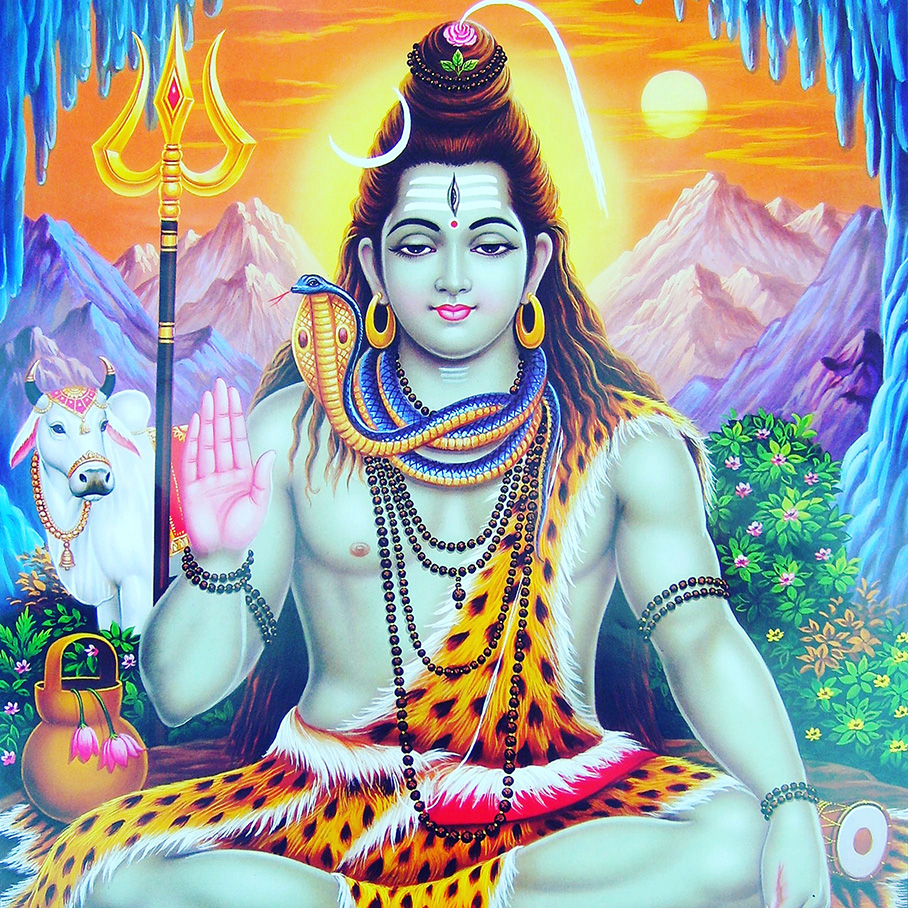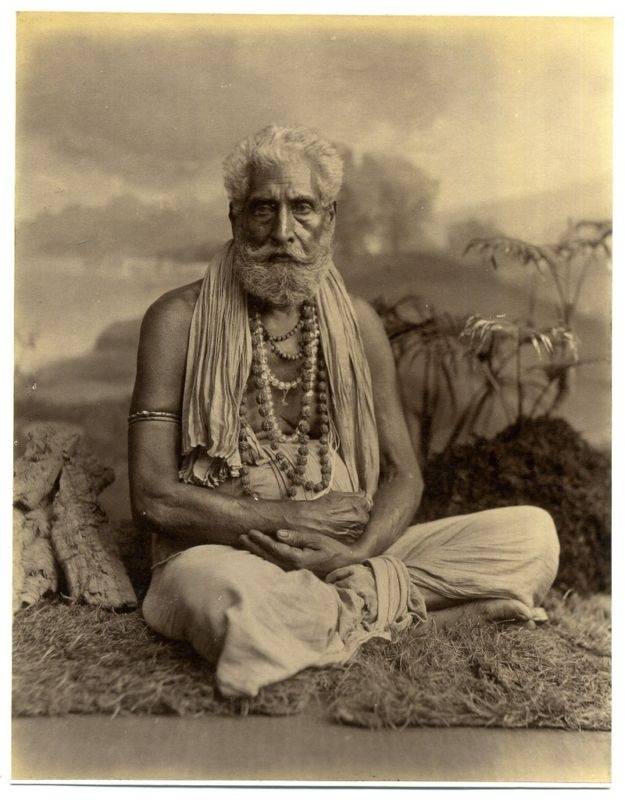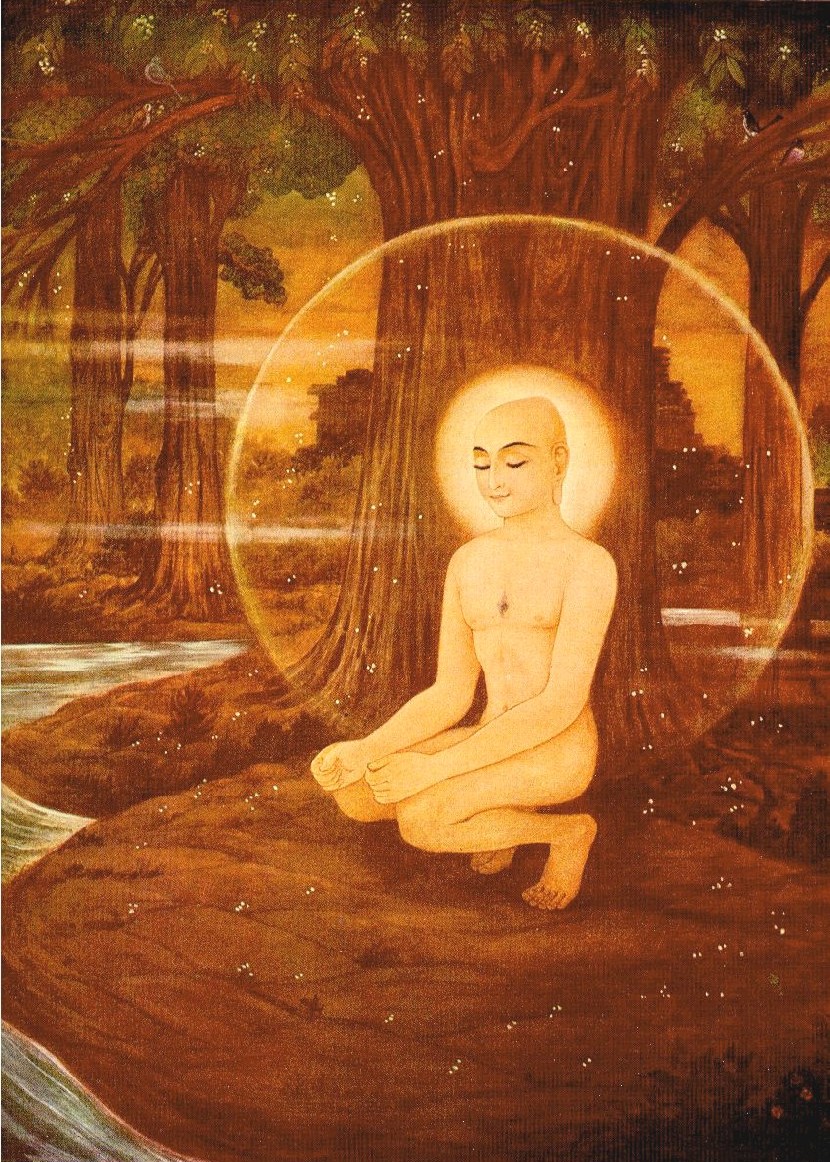Difference between revisions of "Yoga"
Occultwiki (talk | contribs) |
Occultwiki (talk | contribs) |
||
| Line 32: | Line 32: | ||
In [[Hinduism]], practices include jnana yoga, bhakti yoga, karma yoga, kundalini yoga, and hatha yoga. Qualities such as discrimination, renunciation, tranquility, temperance, dispassion, endurance, faith, attention, and a longing for knowledge and freedom are generally desirable. | In [[Hinduism]], practices include jnana yoga, bhakti yoga, karma yoga, kundalini yoga, and hatha yoga. Qualities such as discrimination, renunciation, tranquility, temperance, dispassion, endurance, faith, attention, and a longing for knowledge and freedom are generally desirable. | ||
Laya yoga makes meditative absorption its focus. The laya-yogin seeks to transcend all memory traces and sensory experiences by dissolving the microcosm, the mind, in the transcendental Self-Consciousness. Kundalini yoga aims to awaken bodily and cosmic energy with breath and body techniques, uniting them with universal consciousness. A common teaching method awakens kundalini in the lowest chakra and guides it through the central channel to unite with the absolute consciousness in the highest chakra, at the top of the head. | Laya yoga makes meditative absorption its focus. The laya-yogin seeks to transcend all memory traces and sensory experiences by dissolving the microcosm, the mind, in the transcendental Self-Consciousness. Kundalini yoga aims to awaken bodily and cosmic energy with breath and body techniques, uniting them with universal consciousness. A common teaching method awakens kundalini in the lowest [[chakra]] and guides it through the central channel to unite with the absolute consciousness in the highest chakra, at the top of the head. | ||
Tantra yoga may be described as practices which include yogic poses with elaborate deity visualizations using geometric arrays and drawings (mandalas), male and female deities, life-stage-related rituals, the use of chakras and mantras, and sexual techniques aimed at aiding one's health, longevity and liberation. | Tantra yoga may be described as practices which include yogic poses with elaborate deity visualizations using geometric arrays and drawings (mandalas), male and female deities, life-stage-related rituals, the use of chakras and mantras, and sexual techniques aimed at aiding one's health, longevity and liberation. | ||
Revision as of 07:21, 15 November 2024
Yoga is a group of physical, mental, and spiritual practices or disciplines which originated in ancient India and aim to control (yoke) and still the mind, recognizing a detached witness-consciousness untouched by the mind (Chitta) and mundane suffering (Duḥkha).
There are many schools of yoga, practices, and goals throughout Hinduism, Buddhism, and Jainism. Both a traditional, religious form of yoga and the more modern, exercised-based yoga are practiced worldwide.
Classical yoga incorporates epistemology, metaphysics, ethical practices, systematic exercises and self-development for body, mind and spirit.
Origin
Two general theories exist on the origins of yoga. The linear model holds that yoga originated in the Vedic period, as reflected in the Vedic textual corpus, and influenced Buddhism; according to author Edward Fitzpatrick Crangle, this model is mainly supported by Hindu scholars. According to the synthesis model, yoga is a synthesis of non-Vedic and Vedic elements; this model is favoured in Western scholarship.
Textual history
Yoga-like practices were first mentioned in the ancient Hindu text known as Rigveda.
The first known appearance of the word "yoga" with the same meaning as the modern term is in the Katha Upanishad, which was probably composed between the fifth and third centuries BCE. Yoga continued to develop as a systematic study and practice during the fifth and sixth centuries BCE in ancient India's ascetic and Śramaṇa movements.
The most comprehensive text on Yoga, the Yoga Sutras of Patanjali, date to the early centuries of the Common Era. Yoga philosophy became known as one of the six orthodox philosophical schools (Darśanas) of Hinduism in the second half of the first millennium CE. Hatha yoga texts began to emerge between the ninth and 11th centuries, originating in tantra.
When Alexander the Great reached India in the 4th century BCE, his companion, Onesicritus, described yogis as sages who were aloof and adopted "different postures – standing or sitting or lying naked – and motionless." He inquired further into their philosophy of life and discovered their aim was to "rid the spirit of not only pain, but also pleasure," and that "the best place to inhabit is one with scantiest equipment or outfit."
Modern yoga
The term "yoga" in the Western world often denotes a modern form of Hatha yoga and a posture-based physical fitness, stress-relief and relaxation technique, consisting largely of asanas; this differs from traditional yoga, which focuses on meditation and release from worldly attachments. It was introduced by gurus from India after the success of Swami Vivekananda's adaptation of yoga without asanas in the late 19th and early 20th centuries.
Vivekananda introduced the Yoga Sutras to the West, and they became prominent after the 20th-century success of hatha yoga. Theosophists, including Helena Blavatsky, also influenced the Western public's view of yoga. Esoteric views at the end of the 19th century encouraged the reception of Vedanta and yoga, with their correspondence between the spiritual and the physical.
Yoga has developed into a worldwide, multi-billion-dollar business involving classes, teacher certification, clothing, books, videos, equipment, and holidays. The ancient, cross-legged lotus position and Siddhasana are widely-recognised symbols of yoga. The United Nations General Assembly established 21 June as the International Day of Yoga, and it has been celebrated annually around the world since 2015. On 1 December 2016, yoga was listed by UNESCO as an intangible cultural heritage.
Religious views
Yoga is practised with a variety of methods by all Indian religions.
Hinduism
In Hinduism, practices include jnana yoga, bhakti yoga, karma yoga, kundalini yoga, and hatha yoga. Qualities such as discrimination, renunciation, tranquility, temperance, dispassion, endurance, faith, attention, and a longing for knowledge and freedom are generally desirable.
Laya yoga makes meditative absorption its focus. The laya-yogin seeks to transcend all memory traces and sensory experiences by dissolving the microcosm, the mind, in the transcendental Self-Consciousness. Kundalini yoga aims to awaken bodily and cosmic energy with breath and body techniques, uniting them with universal consciousness. A common teaching method awakens kundalini in the lowest chakra and guides it through the central channel to unite with the absolute consciousness in the highest chakra, at the top of the head.
Tantra yoga may be described as practices which include yogic poses with elaborate deity visualizations using geometric arrays and drawings (mandalas), male and female deities, life-stage-related rituals, the use of chakras and mantras, and sexual techniques aimed at aiding one's health, longevity and liberation.
Jainism
Yoga has always been a central practice in Jainism. Jain spirituality is based on a strict code of nonviolence, or ahimsa (which includes vegetarianism), almsgiving (dāna), faith in the three jewels, austerities (tapas) such as fasting, and yoga. The Mahavira, who founded the Jain faith as it has been practiced for the past 2,000 years, achieved enlightenment while meditating in a squatting yogic pose.
Jain yoga aims at the liberation and purification of the self from the forces of karma, which binds the self to the cycle of reincarnation. Like yoga and Sankhya, Jainism believes in a number of individual selves bound by their individual karma. Only through the reduction of karmic influences and the exhaustion of collected karma can one become purified and released.
Early Jain yoga seems to have been divided into several types, including meditation, abandonment of the body (kāyotsarga), contemplation, and reflection (bhāvanā).
Buddhism
Buddhist yoga encompasses a variety of methods which aim to develop the 37 aids to awakening. Its ultimate goal is bodhi (awakening) or nirvana (cessation), traditionally seen as the permanent end of suffering (dukkha) and rebirth. Buddhist texts use a number of terms for spiritual praxis in addition to yoga. Meditation is seen as supported by the other elements of the Noble Eightfold Path, such as ethics, right exertion, sense restraint and right view.
Later developments in Buddhist traditions led to innovations in yoga practice. The conservative Theravada school developed new ideas on meditation and yoga in its later works.
Christianity
Some Christians integrate physical aspects of yoga, stripped from the spiritual roots of Hinduism, and other aspects of Eastern spirituality with prayer, meditation and Jesus-centric affirmations. The practice also includes renaming poses in English (rather than using the original Sanskrit terms), and abandoning involved Hindu mantras as well as the philosophy of Yoga; Yoga is associated and reframed into Christianity.
In 1989 and 2003, the Vatican issued two documents: Aspects of Christian meditation and "A Christian reflection on the New Age," that were mostly critical of eastern and New Age practices. The 2003 document was published as a 90-page handbook detailing the Vatican's position. The Vatican warned that concentration on the physical aspects of meditation "can degenerate into a cult of the body" and that equating bodily states with mysticism "could also lead to psychic disturbance and, at times, to moral deviations."
Islam
During the 16th century, the hatha yoga text Amritakunda was translated into Arabic and Persian. Yoga was, however, not accepted by mainstream Sunni and Shia Islam. Minority Islamic sects such as the mystic Sufi movement, particularly in South Asia, adopted Indian yoga postures and breath control.
The Indonesian Ulema Council (MUI) imposed a 2009 fatwa banning yoga because it contains Hindu elements. These fatwas have been criticized by Darul Uloom Deoband, a Deobandi Islamic seminary in India. Similar fatwas banning yoga for its link to Hinduism were imposed by Grand Mufti Ali Gomaa in Egypt in 2004, and by Islamic clerics in Singapore earlier.
Malaysia's top Islamic body imposed a legally-enforceable 2008 fatwa prohibiting Muslims from practicing yoga, saying that it had elements of Hinduism and its practice was haram as blasphemy. Malaysian Muslims who had been practicing yoga for years called the decision "insulting."


